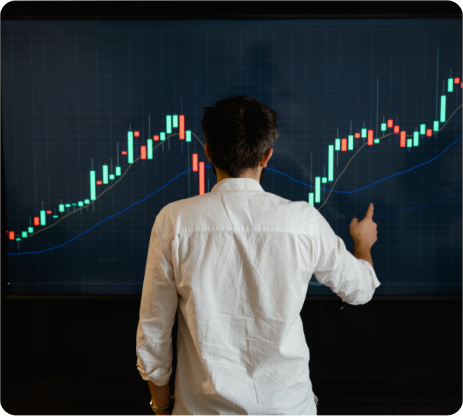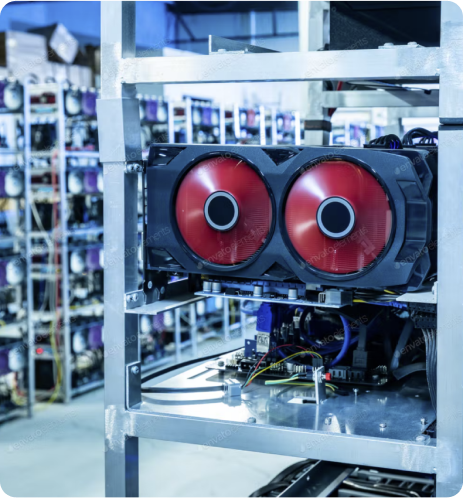NFTs (non-fungible tokens)
May 18, 2021
Analyst Team
01. An Introduction to NFTs
02. A history of NFTs
03. The use of NFTs
04. NFTs market trends
04. NFTs market trends
05. Environmental ethics
06. The risk profile of NFTs
Our analyst team review the NFT investment opportunity, examining the growth of NFTs in early 2021 and their future as a digital asset.
01. An Introduction to NFTs
NFTs, or non-fungible tokens, are digital assets that represent real world objects including digital collectibles, event tickets, music and photos. Each NFT is unique with its own digital signature, and cannot be duplicated.
NFTs are one of a kind and are bought and sold through crypto block-chains. The value of a NFT is market driven. It is determined by what someone else is willing to pay for it.
The unique properties of a NFT ensure that an individual is able to prove whether they own it, ensuring that no one is able to manipulate it and that one can hold it forever, knowing that the asset is secured by their wallet on the blockchain1. and nothing else.
Blockchain technology is essential for the creation of NFTs, as the cryptography is used to chain blocks into a growing list of records. Each block is locked by a particular unique cryptographic hash, or string of characters which uniquely identifies a set of data to the previous block. In the month to May 2021, primary monthly sales of the NFT market have reached USD 62million, with most of the volume being from CryptoPunks and SuperRare.

02. A history of NFTs
The first NFTs to exist were “coloured coins” in 2012-2013, which covered a range of assets including property, coupons, access tokens, digital collectibles, and subscriptions.
NFTs increased in popularity in 2017 with a game called CryptoKitties, based on the Ethereum blockchain, which enabled players to buy and breed limited edition virtual cats. Consequently, game developers built upon those NFTs to allow gamers to win bigger prizes/collectibles. Additionally, CryptoKitties coincided with the 2017 crypto bull market resulting in a dramatic increase of people buying, breeding and trading virtual cats.
CryptoKitties revolutionised the concept of trading and collecting digital assets. The NFT ecosystem will continue to grow as cryptocurrencies increasingly become an accepted part of the financial landscape.
03. The use of NFTs
One of the most popular digital collectibles is NBA Top Shot - a NFT marketplace for NBA fans to buy and sell video clips of their favourite players (also known as 'moments'). As these 'moments' utilise blockchain technology, each digital record is unique, ensuring that counterfeiting is not possible. The price of the packs ranges between USD 9 to USD 999.
NFTs have made their mark in the gaming industry, with notable examples including Axie Infinity, Sorare and F1 Delta Time. Axie Infinity is a NFT game and ecosystem built on the Ethereum blockchain in which users collect, breed and trade fantasy creatures. In Axie Infinity, a community member purchased nine plots of land as one parcel for 888.25 Ether (USD 1.5 million).
Sorare is a fantasy football game using digital cards whereby managers can trade official digital collectibles. Sorare has licensed over 120 football clubs and records up to USD 4million in weekly transaction volumes.
The virtual gaming world continues to evolve as it looks to allow users to import NFTs from other blockchains, to include drivable cars, residential and commercial property development, and the introduction of businesses.
NFTs are present in the fashion, arts and entertainment industries. Currently, there are only a few fashion brand NFTs in the marketplace, with numerous opportunities to expand in order to reach the desired social exposure level. The co-founder of RTKFT studios implemented NFTs by creating a 'META jacket' designed to be worn by a user's gaming avatar, with the aim of targeting the future of fashion and gaming audiences
04. NFTs market trends
NFT yield farming has increased through projects such as MEME limited, and the artwork being sold at Christie’s auction house.
Investors have the option to invest in governance tokens (the picks and shovels of the goldrush) or the gold itself (such as the unique art represented in token form).
Enthusiasts see NFTs as the future of ownership as they believe their ownership status will eventually be tokenised this way. NFTs such as Theta Network’s THETA, Enjin’s ENJ, Sandbox’s SAND and Axie Infinity’s AXS are some of the many major NFT projects which have seen an increase in market capitalisation in the recent months. The combined market capitalisation of these major NFT projects have increased by 1785%.
The cumulative volume of NFTs traded globally is over USD 500 million with the market widely predicted to continue to grow.

05. Environmental ethics
Critics of NFTs state that the mining of NFTs is one of humanity’s most direct ways of making money by polluting the planet. For example, Ethereum mining consumes around 26.5 terawatt- hours of electricity a year. Bitcoin generates 38 million tons of CO2 per year, which contributes to the increase of Earth’s temperature by two degrees.
For a digital artist to sell a NFT, they have to tokenise their work on a blockchain by transacting financially with a miner, who in turn contributes to carbon emissions through the act of mining, specifically the 'proof of work' protocol used to confirm that computational effort has been expended by the prover. In the example of Bitcoin, miners task their computers to complete proof of work puzzles, with the solution being the reward of these coins. Thus, the more energy expended by a particular computer, the more competitive it is.
As the complexity of proof of work puzzles increases, miners will need more computers and higher quality graphics processing units and access to ever larger sources of electricity.
An alternative to 'proof of work' is 'proof of stake', whereby users lock up their own cryptocurrency tokens in the network to prove that they have a stake in keeping the ledger accurate.
Ethereum has stated that they are attempting to switch to this 'proof of stake' format, which will mean that energy consumption by the platform will drop to close to zero.
The trend is towards a greater sustainability for cryptoart, with Green NFT bounty as an example, in which an incentive or 'bounty' is earned by miners working to improve the energy efficiency of the NFT economy in a variety of ways.

06. The risk profile of NFTs
One of the major risks of NFTs is that anyone is able to create an NFT and the uniqueness of each piece does not guarantee its value. Due to this, there are a lot of 'bad tokens' on the market, and a trained eye is required to determine whether something is worth collecting or investing in. It is important to conduct significant due diligence on the seller of the NFT as well as the vendor site.
NFTs are a market based asset, with the implication that a decrease in the press coverage and associated hype is likely to result in depreciation of NFTS as a commodity. It is also worthy of mention that a market within which participants tend towards the use of pseudonyms is by nature prone to fraud and malfeasance in ways that more established and regulated markets are not.